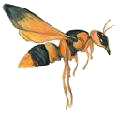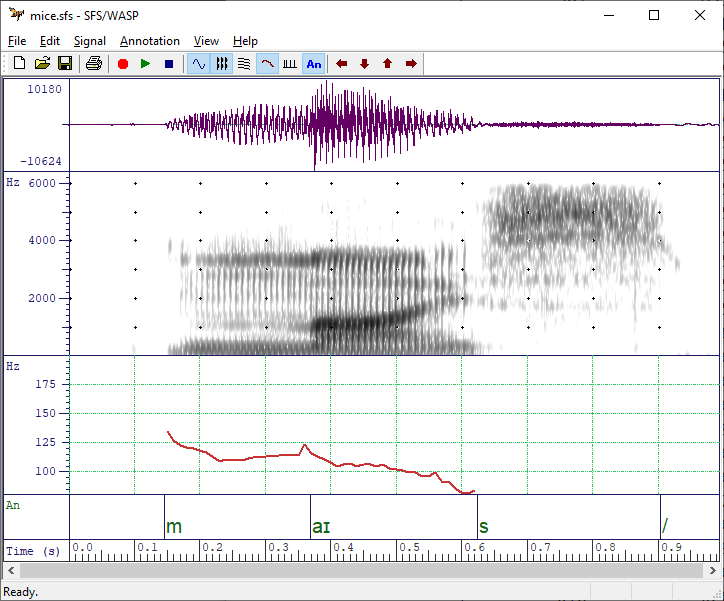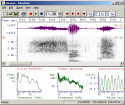
SFS/WASP Version 1.80
Windows Tool for Speech Analysis
WASP is a free program for the recording, display and analysis of speech.
With WASP you can record and replay speech signals, save them and reload
them from disk, edit annotations, and display spectrograms, pitch marks and a fundamental frequency track.

WASP is a simple application that is complete in itself but which is also designed to be compatible with the Speech Filing System (SFS) tools for speech research.
Read the WASP help file on-line.
Try out the new web version of WASP.
Latest News
Version 1.80 released June 2020:
- Updated annotation system providing easier adding and editing of annotations
- Saving of annotations to WAV files
- Input of Unicode annotations including IPA symbols
Chinese version 1.70 released May 2020:
- A chinese translation of WASP has been created by the Education University of Hong Kong for acoustic analysis in Chinese clinical settings.
Version 1.60 released September 2019:
- Add calculation of pitch marks.
- Add statistics table of pitch and voice quality parameters.
- Fix bug in scrolling of long files.
Version 1.54 released July 2013 fixes:
- Memory error in pitch estimation for long files
Download and Installation
Download WASP version 1.80. This is a self-installing executable. Just run it to install WASP.
Older versions are available from:
Download the file called wasp1dd.exe into a temporary directory. Then find and run the file to unpack and install.
Want to learn more?
If you find the study of speech interesting, why not visit the Internet Institute of Speech and Hearing at www.speechandhearing.net ? There you will find tutorials, laboratory experiments, reference material, and details of e-mail lists and discussion groups.
Feedback
Please send suggestions for improvements and reports of program faults to sfs@pals.ucl.ac.uk.
Please note that we are unable to provide help with the use of this program.
Copyright
WASP is not public domain software, its intellectual property is owned by Mark Huckvale, University College London. However WASP may be used and copied without charge as long as the program and help file remain unmodified and continue to carry this copyright notice. Please contact the author for other licensing arrangements. WASP carries no warranty of any kind, you use it at your own risk.
Wasp artwork orginally from www.webdog.com.au with thanks.


